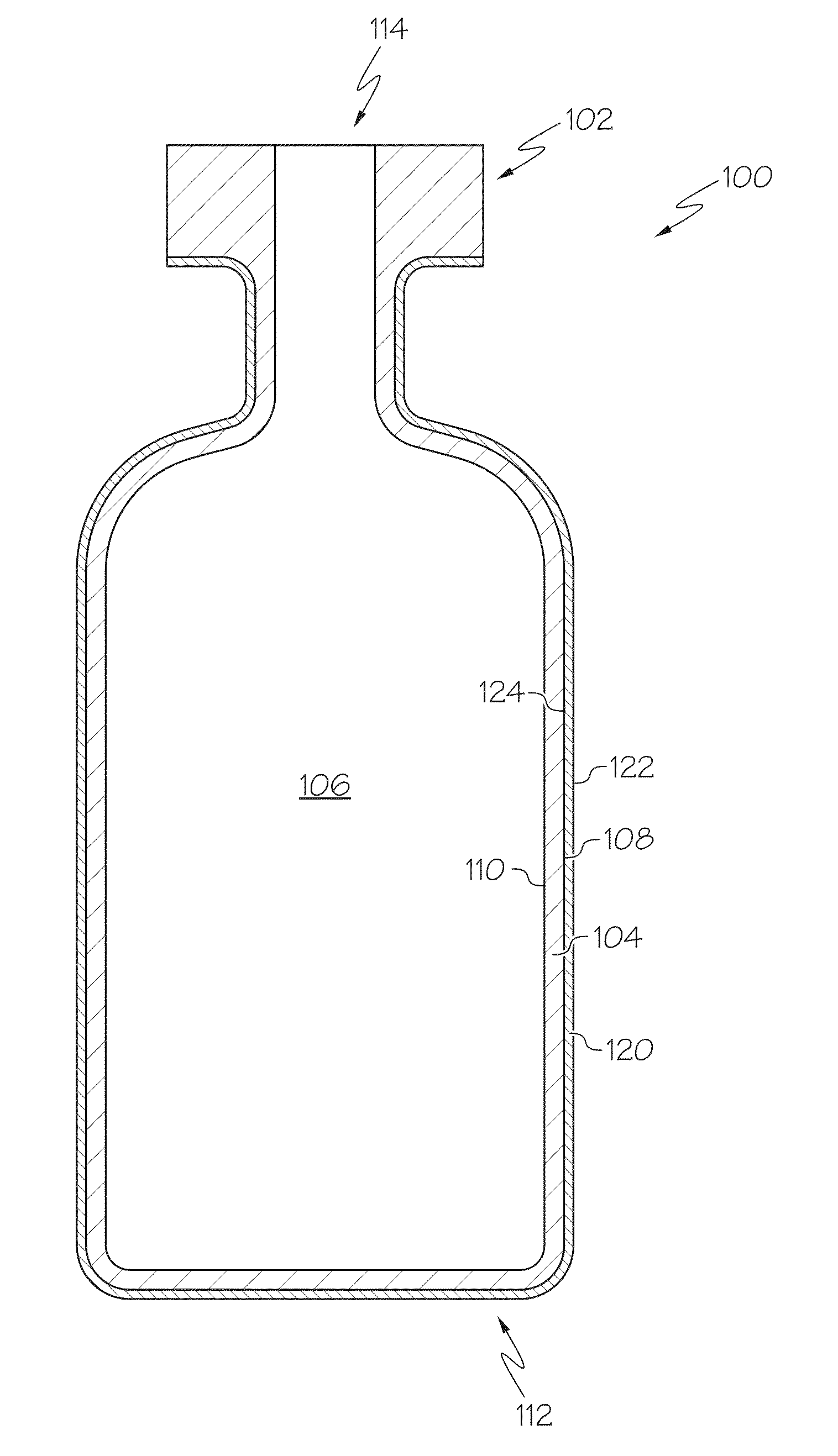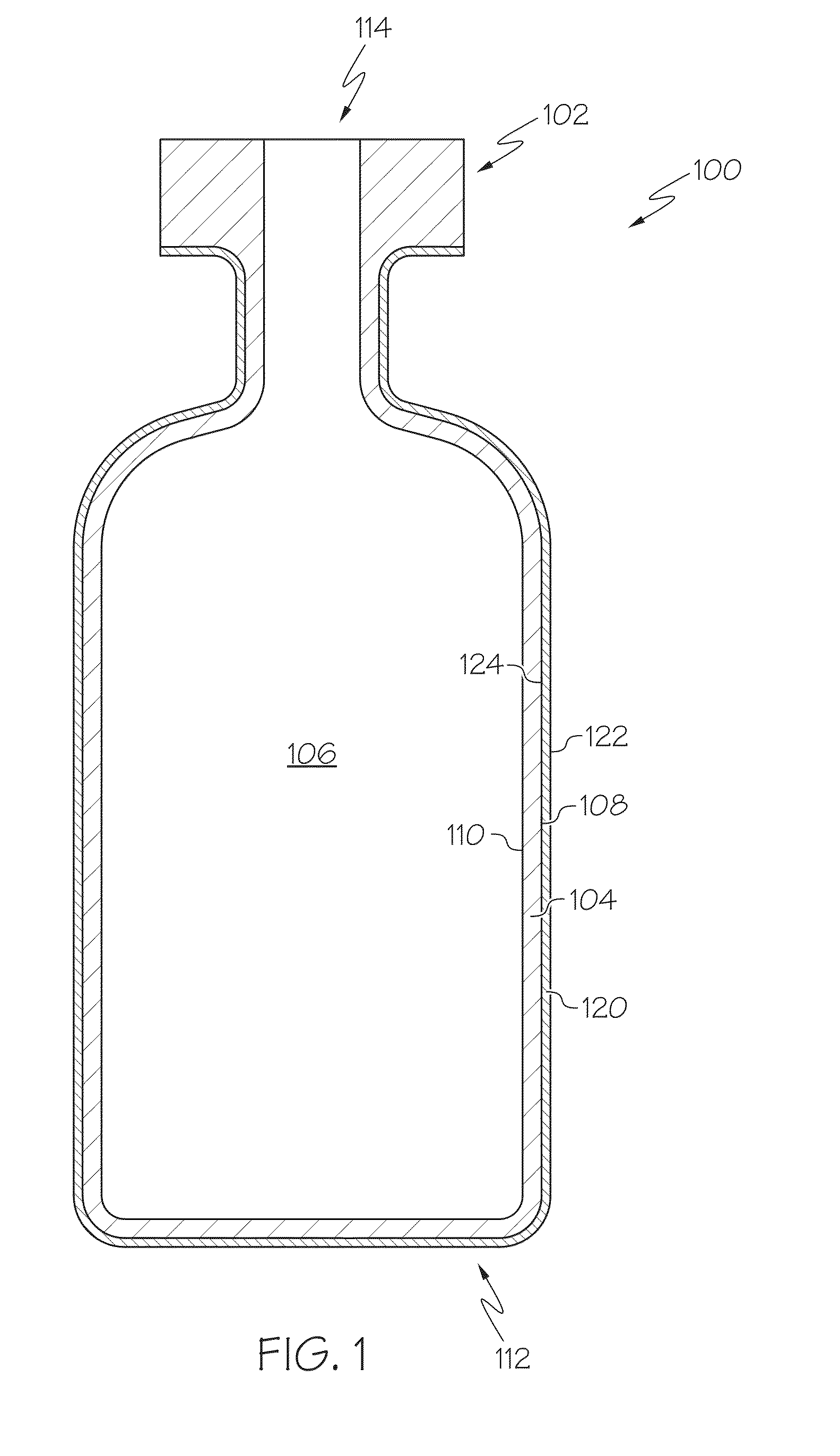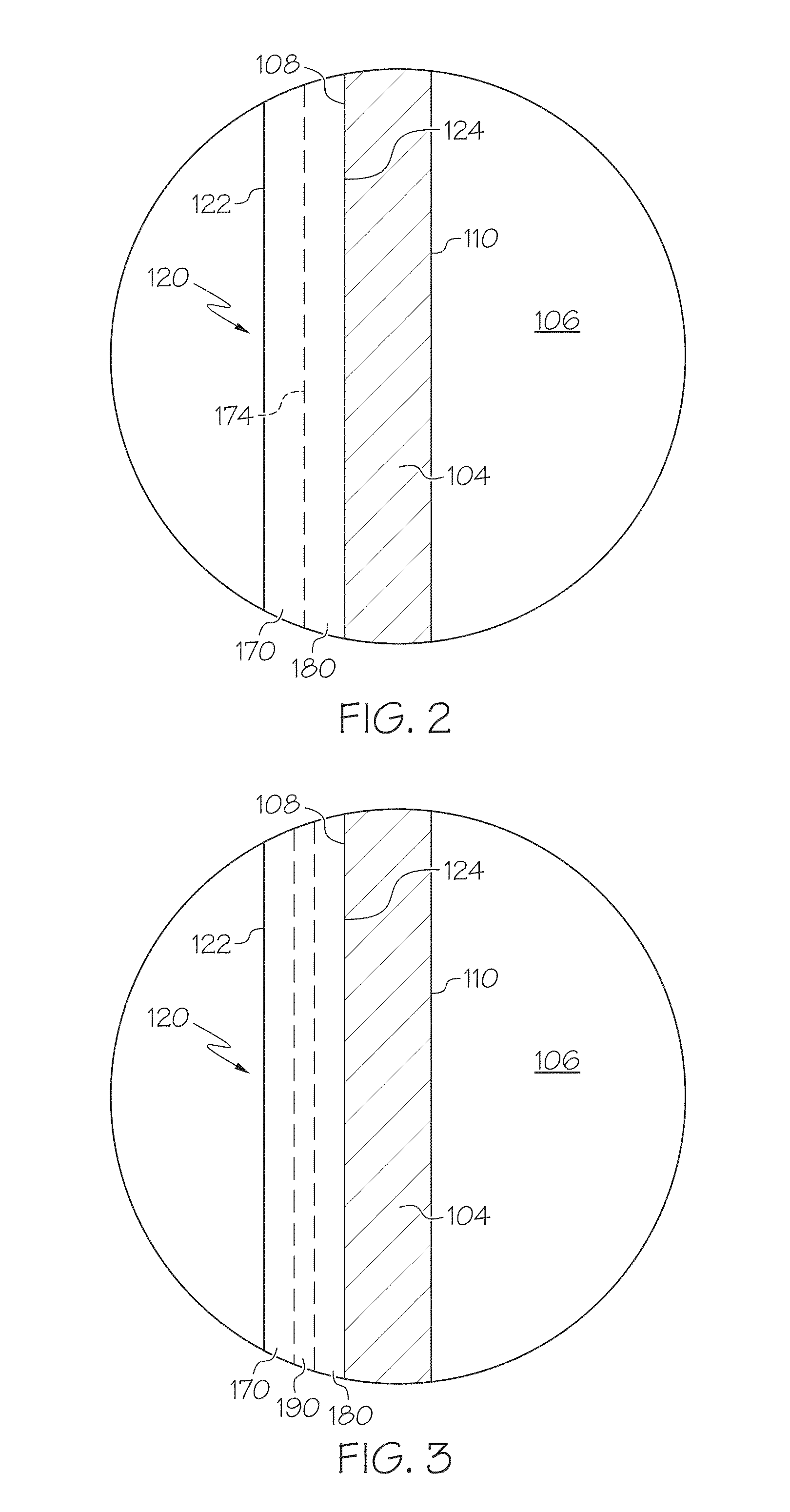Pharmaceutical glass coating for achieving particle reduction
- Summary
- Abstract
- Description
- Claims
- Application Information
AI Technical Summary
Benefits of technology
Problems solved by technology
Method used
Image
Examples
example 1
[0195]Glass vials were formed from Schott Type 1B glass and the glass composition identified as “Example E” of Table 1 of U.S. Pat. No. 8,551,898 and entitled “Glass Compositions with Improved Chemical and Mechanical Durability” assigned to Corning, Incorporated (hereinafter “the Reference Glass Composition”). The vials were washed with deionized water, blown dry with nitrogen, and dip coated with a 0.1% solution of APS (aminopropylsilsesquioxane). The APS coating was dried at 100° C. in a convection oven for 15 minutes. The vials were then dipped into a 0.1% solution of NOVASTRAT® 800 polyamic acid in a 15 / 85 toluene / DMF solution or in a 0.1% to 1% poly(pyromellitic dianhydride-co-4,4′-oxydianiline) amic acid solution (Kapton precursor) in N-Methyl-2-pyrrolidone (NMP). The coated vials were heated to 150° C. and held for 20 minutes to evaporate the solvents. Thereafter, the coatings were cured by placing the coated vials into a preheated furnace at 300° C. for 30 minutes. After cur...
example 2
[0196]Glass vials formed from Schott Type 1B glass vials (as received / uncoated) and vials coated with a low-friction coating were compared to assess the loss of mechanical strength due to abrasion. The coated vials were produced by first ion exchange strengthening glass vials produced from the Reference Glass Composition. The ion exchange strengthening was performed in a 100% KNO3 bath at 450° C. for 8 hours. Thereafter, the vials were washed with deionized water, blown dry with nitrogen, and dip coated with a 0.1% solution of APS (aminopropylsilsesquioxane). The APS coating was dried at 100° C. in a convection oven for 15 minutes. The vials were then dipped into a 0.1% solution of NOVASTRAT® 800 polyamic acid in a 15 / 85 toluene / DMF solution. The coated vials were heated to 150° C. and held for 20 minutes to evaporate the solvents. Thereafter, the coatings were cured by placing the coated vials into a preheated furnace at 300° C. for 30 minutes. The coated vials were then soaked in ...
example 3
[0199]In this example, multiple sets of glass tubes were tested in four point bending to assess their respective strengths. A first set of tubes formed from the Reference Glass Composition was tested in four point bending in as received condition (un-coated, non-ion exchange strengthened). A second set of tubes formed from the Reference Glass Composition was tested in four point bending after being ion exchange strengthened in a 100% KNO3 bath at 450° C. for 8 hours. A third set of tubes formed from the Reference Glass Composition was tested in four point bending after being ion exchange strengthened in a 100% KNO3 bath at 450° C. for 8 hours and coated with 0.1% APS / 0.1% NOVASTRAT® 800 as described in Example 2. The coated tubes were also soaked in 70° C. de-ionized water for 1 hour and heated in air at 320° C. for 2 hours to simulate actual processing conditions. These coated tubes were also abraded in the vial-on-vial jig shown in FIG. 9 under a 30 N load prior to bend testing. A...
PUM
| Property | Measurement | Unit |
|---|---|---|
| Fraction | aaaaa | aaaaa |
| Fraction | aaaaa | aaaaa |
| Fraction | aaaaa | aaaaa |
Abstract
Description
Claims
Application Information
 Login to View More
Login to View More - R&D Engineer
- R&D Manager
- IP Professional
- Industry Leading Data Capabilities
- Powerful AI technology
- Patent DNA Extraction
Browse by: Latest US Patents, China's latest patents, Technical Efficacy Thesaurus, Application Domain, Technology Topic, Popular Technical Reports.
© 2024 PatSnap. All rights reserved.Legal|Privacy policy|Modern Slavery Act Transparency Statement|Sitemap|About US| Contact US: help@patsnap.com










